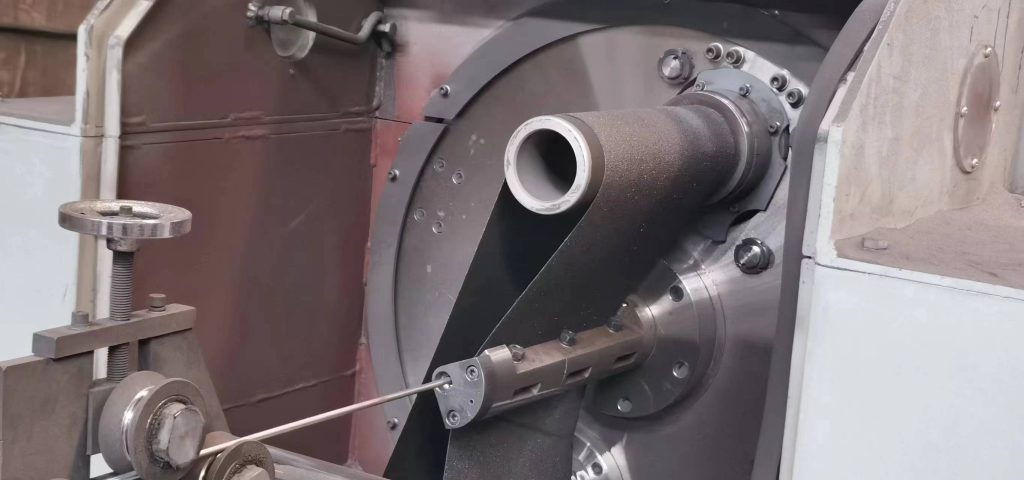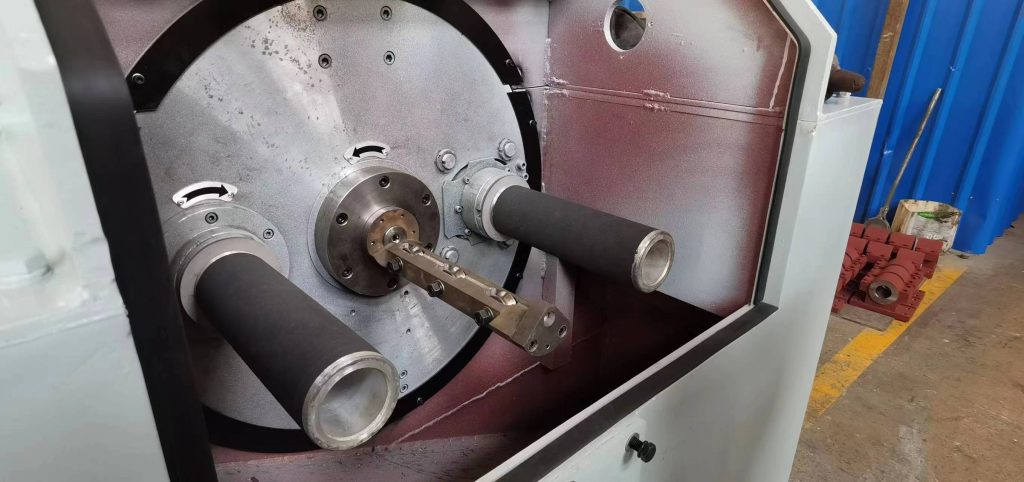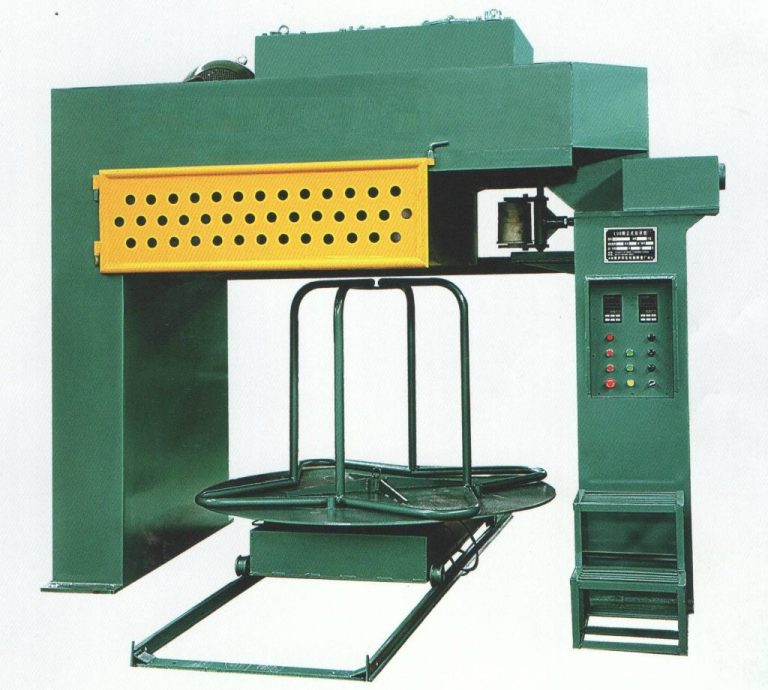Table of Contents
Benefits of Sanding and Descaling for Metal Surfaces
Sanding and descaling are two important processes in metalworking that are essential for preparing metal surfaces for various applications. Sanding involves using abrasive materials to smooth out rough surfaces, while descaling involves removing rust, scale, and other impurities from metal surfaces. Both processes are crucial for achieving a clean, smooth, and uniform surface that is ready for painting, coating, or welding.
One of the key benefits of sanding and descaling is that they improve the adhesion of coatings and paints to metal surfaces. When metal surfaces are rough or contaminated with rust and scale, coatings and paints may not adhere properly, leading to premature failure and corrosion. By sanding and descaling the metal surface, you create a clean and smooth surface that allows coatings and paints to bond effectively, resulting in a longer-lasting finish.
Another benefit of sanding and descaling is that they improve the appearance of metal surfaces. Rough, pitted, or rusted metal surfaces can be unsightly and detract from the overall aesthetic of a finished product. By sanding and descaling the metal surface, you can remove imperfections and create a smooth, uniform surface that enhances the visual appeal of the metal.

In addition to improving adhesion and appearance, sanding and descaling also help to improve the performance of metal surfaces. Rust and scale can weaken metal surfaces and make them more prone to corrosion and failure. By removing these impurities through sanding and descaling, you can restore the strength and integrity of the metal, ensuring that it performs as intended and has a longer service life.
Furthermore, sanding and descaling can also improve the efficiency of welding and other metal fabrication processes. Rough or contaminated metal surfaces can interfere with the welding process, leading to poor weld quality and weak joints. By sanding and descaling the metal surface, you create a clean and smooth surface that allows for better weld penetration and stronger, more reliable welds.
Overall, sanding and descaling are essential processes in metalworking that offer a wide range of benefits. From improving adhesion and appearance to enhancing performance and efficiency, these processes play a crucial role in preparing metal surfaces for a variety of applications. Whether you are painting, coating, welding, or fabricating metal, sanding and descaling are key steps that can help you achieve the best results and ensure the quality and longevity of your finished products.
Tips for Properly Sanding and Descaling Wood
Sanding and descaling wood are essential steps in the process of preparing wood for finishing. Whether you are working on a DIY project or a professional woodworking job, proper sanding and descaling techniques can make a significant difference in the final result. In this article, we will discuss some tips for properly sanding and descaling wood to achieve a smooth and professional finish.
When it comes to sanding wood, the first step is to choose the right sandpaper grit. The grit of the sandpaper determines how coarse or fine the sandpaper is. Coarse grit sandpaper, such as 60 or 80 grit, is used for removing material quickly, while fine grit sandpaper, such as 220 or 320 grit, is used for smoothing out the surface. It is essential to start with a coarse grit sandpaper and gradually work your way up to a finer grit to achieve a smooth finish.
Before sanding, it is crucial to inspect the wood for any imperfections, such as knots, cracks, or dents. These imperfections can affect the final finish, so it is essential to address them before sanding. You can use a wood filler to fill in any gaps or holes and sand them down to create a smooth surface.
When sanding wood, it is important to sand in the direction of the grain. Sanding against the grain can cause scratches and damage to the wood surface. By sanding with the grain, you can achieve a smooth and even finish. It is also important to use even pressure when sanding to avoid creating uneven spots on the wood.
In addition to sanding, descaling is another important step in preparing wood for finishing. Descaling involves removing any old paint, varnish, or other finishes from the wood surface. This can be done using a chemical stripper or a heat gun to soften the old finish and scrape it off. Descaling is essential to ensure that the new finish adheres properly to the wood surface.
When descaling wood, it is important to wear protective gear, such as gloves and a mask, to protect yourself from the chemicals or fumes. It is also important to work in a well-ventilated area to avoid inhaling any harmful fumes. Once the old finish has been removed, it is essential to sand the wood surface to smooth out any rough spots or imperfections.
After sanding and descaling, it is important to clean the wood surface thoroughly to remove any dust or debris. You can use a tack cloth or a vacuum with a brush attachment to clean the wood surface. Once the wood surface is clean, you can apply a primer or sealer to prepare the wood for finishing.
In conclusion, proper sanding and descaling techniques are essential for achieving a smooth and professional finish on wood. By following these tips and techniques, you can ensure that your woodworking projects turn out beautifully. Remember to choose the right sandpaper grit, sand in the direction of the grain, and clean the wood surface thoroughly before finishing. With proper preparation and attention to detail, you can achieve a flawless finish on your wood projects.
The Importance of Sanding and Descaling in Surface Preparation for Painting
Surface preparation is a crucial step in the painting process that often gets overlooked or rushed. However, taking the time to properly sand and descale a surface before painting can make a significant difference in the final result. Sanding and descaling are essential techniques that help to ensure a smooth and durable finish that will last for years to come.

Sanding is the process of using abrasive materials to smooth out rough surfaces and remove any imperfections. It is typically done with sandpaper, which comes in various grits ranging from coarse to fine. The choice of sandpaper grit depends on the surface being sanded and the level of smoothness desired. Coarse grits are used to remove large imperfections, while finer grits are used to achieve a smooth finish.
One of the main benefits of sanding is that it creates a clean and even surface for the paint to adhere to. Without proper sanding, paint may not adhere properly, leading to peeling, cracking, or bubbling. Sanding also helps to remove any old paint, dirt, or debris that may be present on the surface, ensuring a clean and uniform finish.
Descaling, on the other hand, is the process of removing rust, scale, or other corrosion from metal surfaces. This is typically done using a wire brush, sandblasting, or chemical treatments. Descaling is important because rust and corrosion can weaken the metal surface, leading to paint failure and structural damage over time.
In addition to improving paint adhesion, sanding and descaling also help to improve the overall appearance of the painted surface. By removing imperfections and corrosion, the surface will have a smoother and more professional finish. This is especially important for surfaces that will be exposed to harsh weather conditions or high levels of wear and tear.
When sanding and descaling, it is important to wear proper safety gear, such as goggles, gloves, and a mask, to protect yourself from dust and debris. It is also important to properly prepare the surface by cleaning it thoroughly before sanding or descaling. This will help to ensure that the abrasive materials can do their job effectively.
In conclusion, sanding and descaling are essential steps in surface preparation for painting. These techniques help to create a clean, smooth, and durable surface that will ensure a professional finish and long-lasting results. By taking the time to properly sand and descale a surface before painting, you can ensure that your paint job will look great and stand the test of time. So, next time you embark on a painting project, don’t skip the sanding and descaling – your finished product will thank you.





